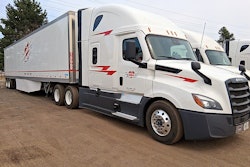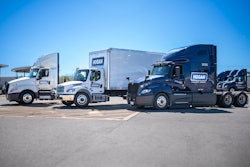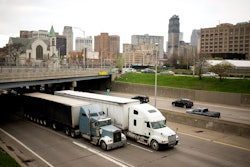Arkansas Best Corp. today, Jan. 24, announced fourth-quarter 2006 income from continuing operations of $14.2 million, compared to $29.5 million in the fourth quarter of 2005. Arkansas Best’s revenue during the fourth quarter of 2006 was $449.0 million, a per-day decrease of 3.9 percent compared to the fourth quarter of 2005.
“Despite a challenging economic environment in the last few months of the year, Arkansas Best closed the year with a strong financial position, and ABF generated its fifth-best yearly operating ratio since the industry was deregulated in 1980,” says Robert A. Davidson, president and chief executive officer of Fort Smith, Ark.-based Arkansas Best.
For the full year of 2006, Arkansas Best reported income from continuing operations of $3.16 per diluted common share compared to $3.99 per diluted common share in 2005. Excluding a previously disclosed after-tax pension settlement accounting charge of $0.24 per share, full-year 2006 earnings from continuing operations were $3.40 per diluted share. This compares to full-year 2005 earnings from continuing operations of $3.61 per diluted share, after adjusting for a $0.38-per-share gain on the sale of properties to G.I. Trucking Co. Arkansas Best’s 2006 full-year revenue was $1.86 billion, a per-day increase of 6.6 percent over 2005 full-year revenue from continuing operations of $1.75 billion.
ABF Freight System had fourth-quarter 2006 revenue of $436.1 million, a per-day decrease of 4.3 percent compared to fourth-quarter 2005 revenue of $455.5 million. ABF’s total tonnage per day during the fourth quarter of 2006 decreased by 6.8 percent compared to the same period last year. ABF’s operating income during the 2006 fourth quarter was $20.8 million compared to $48.4 million in the same period last year. ABF’s fourth-quarter 2006 operating ratio was 95.2 percent compared to its fourth-quarter 2005 operating ratio of 89.4 percent.
“In October and continuing into November, traditionally among the busiest months of the year, ABF experienced a sudden and dramatic reduction in business that mirrored conditions throughout the trucking industry,” Davidson says. “This year’s sequential decline in total weight per day from September to October was the largest, by far, in over 20 years. It occurred at a time when ABF was operationally prepared for strong seasonal business and for maintaining the aggressive customer service level improvements initiated in the third quarter of 2006. In addition, ABF was, and continues to be, in the midst of further expansion of its regional service under the Regional Performance Model. As a result, we were delayed in reducing labor and other costs from the ABF network, and our fourth-quarter operating ratio was negatively impacted.
“The negative operating leverage ABF experienced in the fourth quarter was reminiscent of ABF’s 2001 results compared to 2000, when similar tonnage declines resulted in a significant increase in ABF’s operating ratio,” Davidson says. “In a cyclical industry, ABF has managed through previous periods of declining tonnage by maintaining pricing discipline and closely monitoring costs. We are doing that now. As in the past, when tonnage levels improve, we expect that profitability should return to traditional levels.”










